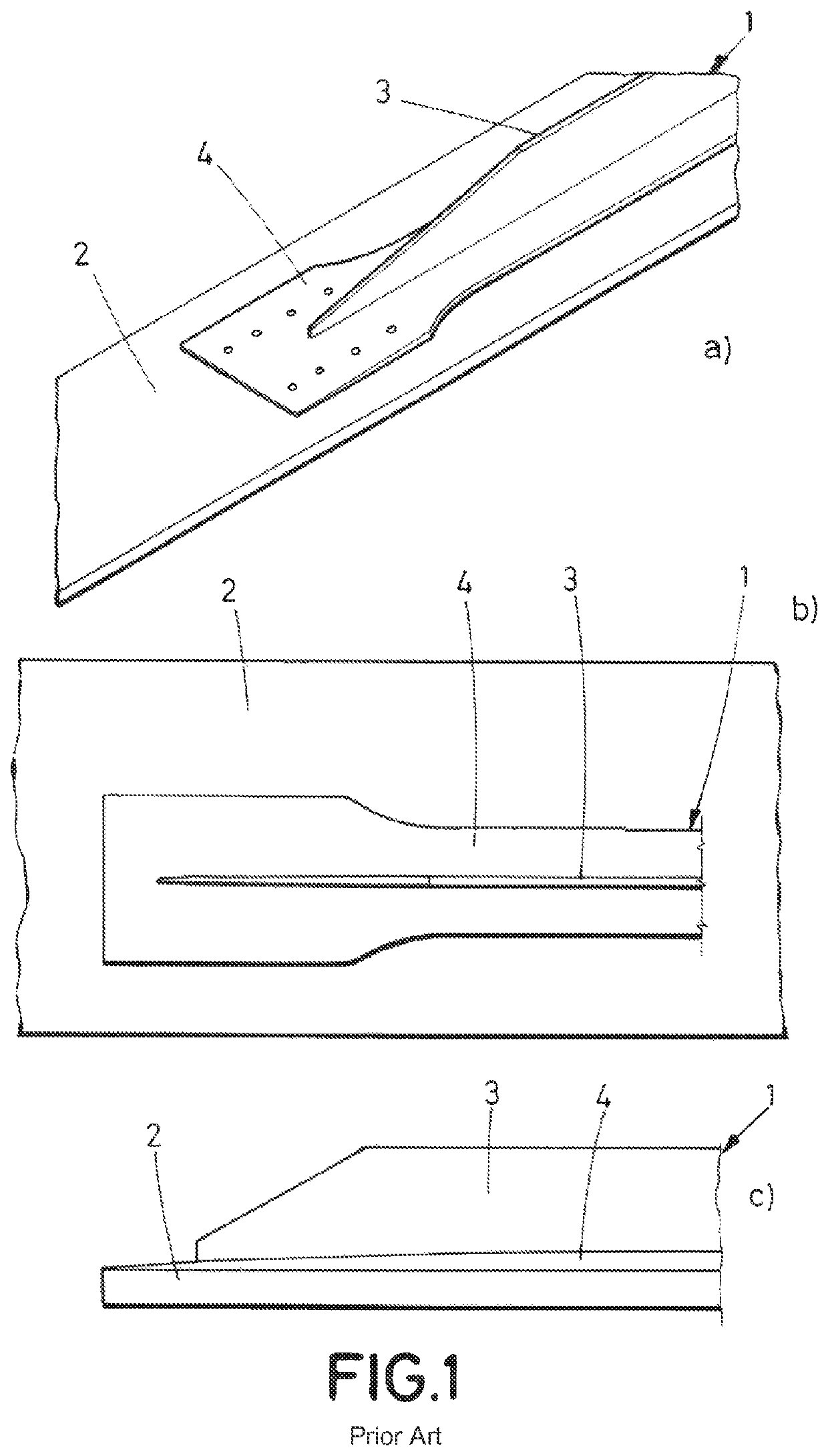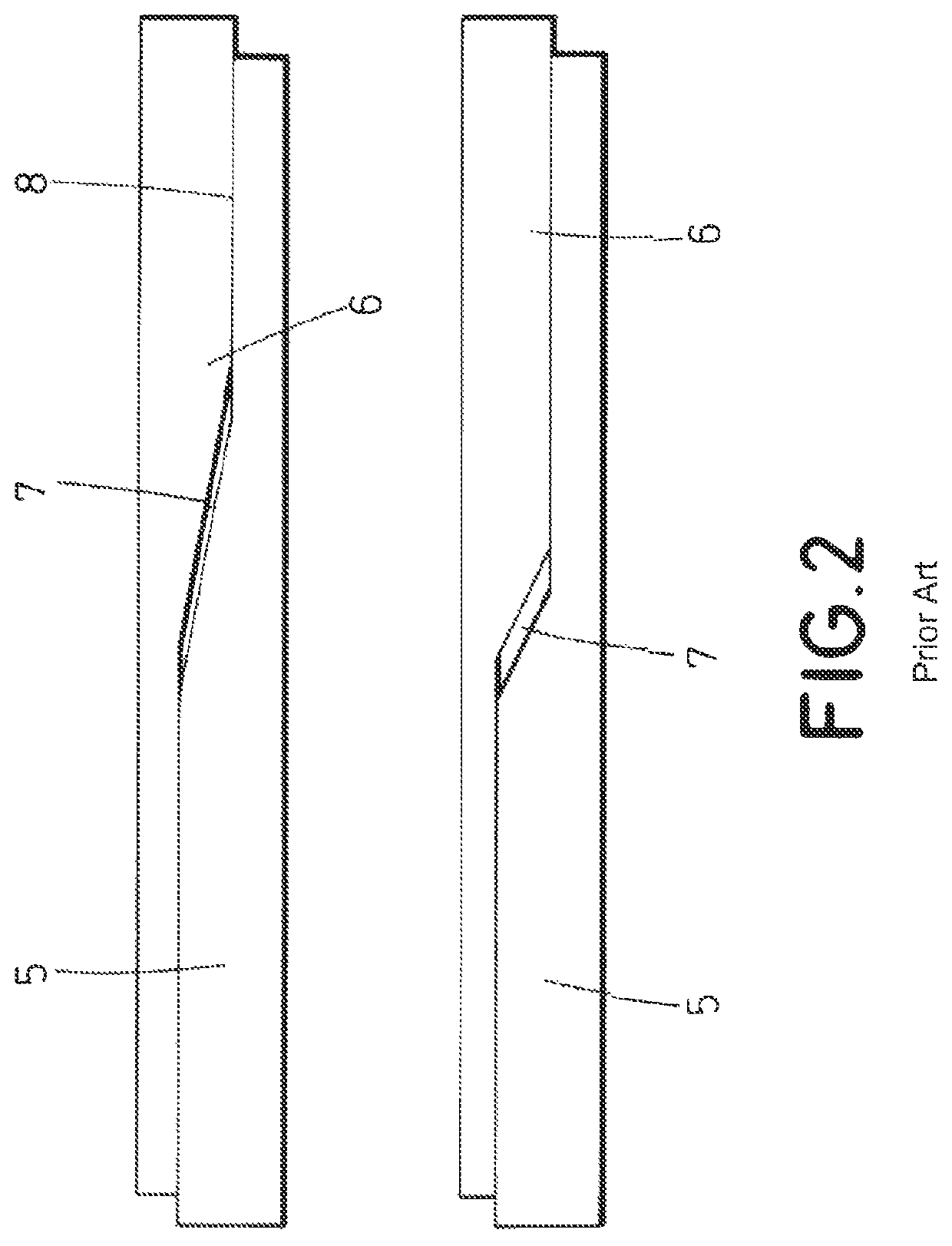Hybrid tool for curing pieces of composite material
a composite material and hybrid technology, applied in the field of composite material tooling, can solve the problems of insufficient supply of stringers with abrupt thickness reduction, inability to meet the requirements of some demanding applications, and inability to meet the requirements of stringers, so as to prevent the flow of resin into the cavity, prevent the volume of the cavity, and prevent the effect of unfavorable cfrp pieces to be obtained
- Summary
- Abstract
- Description
- Claims
- Application Information
AI Technical Summary
Benefits of technology
Problems solved by technology
Method used
Image
Examples
Embodiment Construction
[0040]FIG. 3 shows an hybrid tool (14) for curing pieces of composite material according to a preferred embodiment of the invention, wherein the tool (14) includes first and second L-shaped parts (9, 9′) which are symmetrical to each other, and are configured for curing a T-shaped stringer when they are coupled to each other as shown in FIG. 5.
[0041]Each of the L-shaped parts (9, 9′) comprises a metallic portion (15, 15′) and an elastic portion (16, 16′) arranged on the inside surface of the respective metallic portions (15, 15′), in such a manner that both portions (15, 15′, 16, 16′) together define a contact surface (17, 17′) meant to be in contact with a the composite part (25) (preform) to be cured. For that purpose, that contact surface (17, 17′) has a shape which copies at least part of a surface of a piece (25) of composite material.
[0042]FIG. 3 also shows a male mold (13), typically made of aluminum, arranged between the two L-shaped parts, which is used to form the elastic ...
PUM
| Property | Measurement | Unit |
|---|---|---|
| thickness | aaaaa | aaaaa |
| area | aaaaa | aaaaa |
| elastic | aaaaa | aaaaa |
Abstract
Description
Claims
Application Information
 Login to View More
Login to View More - R&D
- Intellectual Property
- Life Sciences
- Materials
- Tech Scout
- Unparalleled Data Quality
- Higher Quality Content
- 60% Fewer Hallucinations
Browse by: Latest US Patents, China's latest patents, Technical Efficacy Thesaurus, Application Domain, Technology Topic, Popular Technical Reports.
© 2025 PatSnap. All rights reserved.Legal|Privacy policy|Modern Slavery Act Transparency Statement|Sitemap|About US| Contact US: help@patsnap.com



